For the first half of the 20th century, Jeff-Vander-Lou was a destination. With major employers like Coca-Cola operating factories in the neighborhood, jobs were readily accessible, while the old St. Louis Cardinals’ stadium ensured a steady stream of customers for small businesses in Jeff-Vander-Lou. And, as one of the few neighborhoods in St. Louis where Black residents could purchase homes, it offered a path to prosperity for generations of St. Louisans who built lives there.
By 2002, however, when the Farragut Branch Elementary School in Jeff-Vander-Lou closed its doors for the last time, area residents had reason to doubt that the facility would ever be described as a “community asset” again. In the preceding five decades, the loss of local industry and systemic disinvestment in Jeff-Vander-Lou had exacted a significant toll, manifested by the staggering number of abandoned properties left behind by the exodus of residents seeking opportunity elsewhere.
Were it not for the efforts of Tabernacle Community Development Corporation (Tabernacle CDC), that might have been the last word on the former school. Instead, it’s the starting point in a story of community-driven revitalization that reached a major milestone in December 2021 when the facility reopened as a community resource center following a $1.5 million renovation.
Now known as The Hub, the 15,000-square-foot facility is bringing together organizations committed to strengthening communities with vital services and programs, including health care, legal counseling, speech therapy, and music instruction – with more to come. Just as impactful are the intangible benefits of breathing new life into a facility largely written off in the community before Tabernacle CDC revitalized it.
“When people realize this is here for them, it sends a message that someone is willing to invest in their neighborhood because they’re worth it,” says Pastor Andre Alexander, Tabernacle CDC’s president. “That’s huge.”
Keep scrolling to take a photo tour of The Hub and learn more about how it’s serving as a building block for further community development in Jeff-Vander-Lou.
Revitalizing a community asset


Founded in 2014 as an offshoot of Tabernacle Church, Tabernacle CDC’s goal is to eliminate poverty and social exclusion in Jeff-Vander-Lou and several adjoining neighborhoods by improving the social, educational, and economic infrastructure necessary for communities and their residents to thrive.
After establishing several programs designed to increase self-sufficiency among neighborhood residents and successfully redeveloping 13 abandoned homes in the area that were leased back to members of the community at affordable rates, Tabernacle CDC turned its attention to the former school that had sat vacant and deteriorating in Jeff-Vander-Lou for the better part of two decades.
“We had outgrown our church and were looking for a place to bring in partners to help the families that we serve and to strengthen the community, and this facility is centrally located in relation to the housing that we had already redeveloped,” says Alexander. “It was also a chance to revitalize a community asset instead of letting it continue to deteriorate. When you have something that’s foundationally solid, why let it stay broken if it doesn’t have to?”
IFF closed two loans totaling $648,000 to facilitate Tabernacle CDC’s acquisition and renovation of the facility, which were provided through the St. Louis Development Corporation’s New Markets Tax Credit small loan pool. Additional capital for the project was secured through individual donations and grant funding from the City of St. Louis Community Development Administration. The Hub was designed by HT Design LLC and renovated by Cornerstone Construction, Tabernacle CDC’s in-house general contractor.
Quality health care embedded in the community
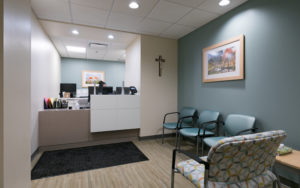
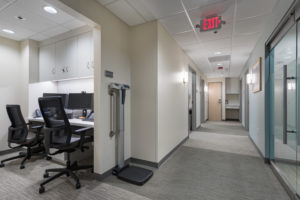
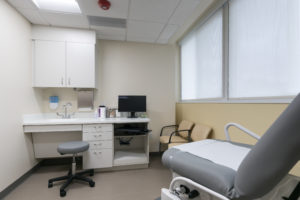
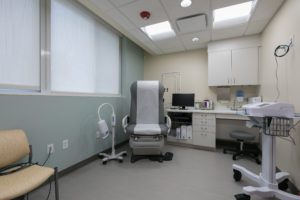
Quality health care was a major need identified in the north St. Louis neighborhoods served by Tabernacle CDC while the organization was planning for The Hub, and the on-site health care clinic operated by Mercy is a direct response to that need. The clinic has four exam rooms, a fully outfitted lab, and ultrasound equipment – enabling medical staff to meet a wide range of health care needs. Those working out of the clinic include:
- A family medicine nurse practitioner who provides convenient care services for pediatric and adult patients;
- An OB/GYN for specialized women’s health services, which was a priority because of the high infant mortality rate in north St. Louis;
- A social worker who offers behavioral health support in collaboration with Mercy’s primary care provider; and
- A community health worker available to help navigate Mercy’s services, Medicaid and ACA enrollment, social assessments, and transportation arrangements.
Dedicated spaces for data-informed programming

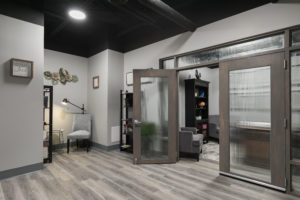
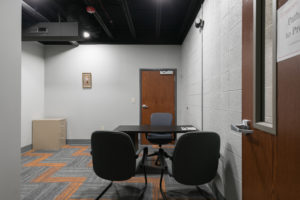
The Mercy Family Clinic is the largest anchor tenant at The Hub, but an array of additional services are provided at The Hub – all of which are the result of a data-driven approach by Tabernacle CDC to identify community needs. In addition to soliciting input from community residents, the organization combed through census data and geographically relevant research to determine what programming was most needed at The Hub. With the social determinants of health in mind, Tabernacle CDC established partnerships with several organizations that have since become anchor tenants in the facility. They include:
- Maryville University, which provides speech therapy services for children aged 2-6;
- Pathways to Progress, a joint venture between Catholic Charities of St. Louis and St. Francis Community Services that provides long-term, intensive case management for low-income families in north St. Louis neighborhoods designed to help them achieve financial stability;
- Pianos for People, a nonprofit that provides free access to pianos, lessons, and summer camps for children; and
- The Holland Law Firm, which helps handle legal matters that affect clients’ stability – like outstanding traffic tickets, warrants, and family matters – while also offering seminars on topics like credit reports and expunging criminal records.
A multifunctional meeting place
The 3,000-square-foot auditorium at The Hub has movable chairs, a state-of-the-art audiovisual system, and a platform at the front of the room for speakers. Tabernacle Church now holds Sunday services in the space after exceeding the capacity of its former sanctuary, but the multifunctional space is designed to flex to meet virtually any community need. With a capacity of 200 people, the auditorium can be rented for weddings, funerals, concerts, meetings, and more.
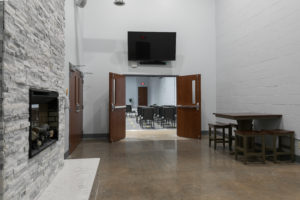
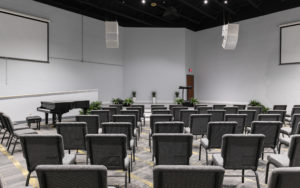

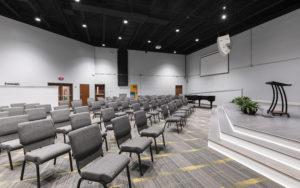
Quality infrastructure for the community, by the community
The Hub also includes a 1,000-square-foot community room, three 300-square-foot classrooms carved from the former school’s gymnasium, a 250-square-foot vestibule, and a 750-square-foot corridor and fellowship area – all of which can be rented for events and meetings. In addition to creating a new revenue stream for Tabernacle CDC that will help The Hub remain viable over time, the rentable sections of the facility address a fundamental challenge in north St. Louis: a shortage of quality infrastructure that helps facilitate community ties.
“From a physical asset standpoint, certain things just didn’t exist in the neighborhood,” says Alexander. “The fact that this facility was built in 1964, sat vacant for 20 years, and has been repurposed to create spaces like this is really what stands out most the first time you walk into The Hub.”
Beyond supporting long-term aspirations in Jeff-Vander-Lou and surrounding communities, The Hub provided an immediate opportunity to provide an economic boost in the neighborhood. The renovation of the facility achieved a minority participation rate of almost 80 percent, most of whom were local to the area. This ensured that the project helped increase the financial capacity of subcontractors and tradespeople in north St. Louis.
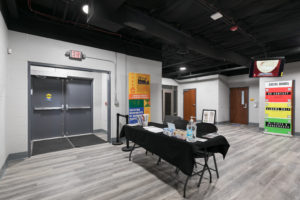

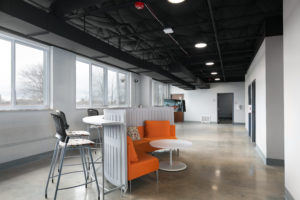
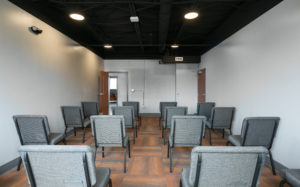
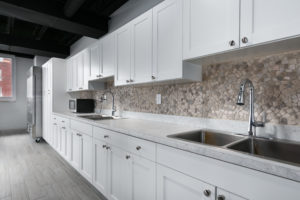
And more to come
Though The Hub has already had a positive impact on the community less than half a year after opening, Tabernacle CDC continues to work to bring new resources to the facility. The next addition will be a youth-focused technology center that will help young people build digital literacy, which is currently being finalized. Also being considered is a satellite bank branch at The Hub, which would greatly increase access to financial services in communities historically underserved by banks.
And, while Tabernacle CDC participates in the St. Louis cohort of the Stronger Nonprofits Initiative to increase its financial capacity, the organization is also exploring its options with IFF’s real estate team for a second phase of The Hub project that would expand the physical space available to accommodate additional on-site services.
“With all of these resources that haven’t been here in decades now available within walking distance, we’re expecting to see the trajectory of outcomes for children and their families change over the long-term,” says Alexander. “A child living in this neighborhood is now better able to remain healthy, which means more days in school, which leads to better education, increasing access to better job opportunities that make it possible to create wealth for entire families and stabilize the community.”
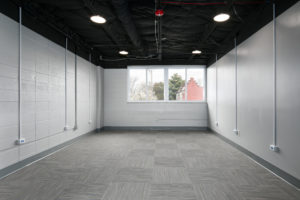
Click here to learn about additional community-driven projects in Missouri financed by IFF.